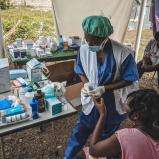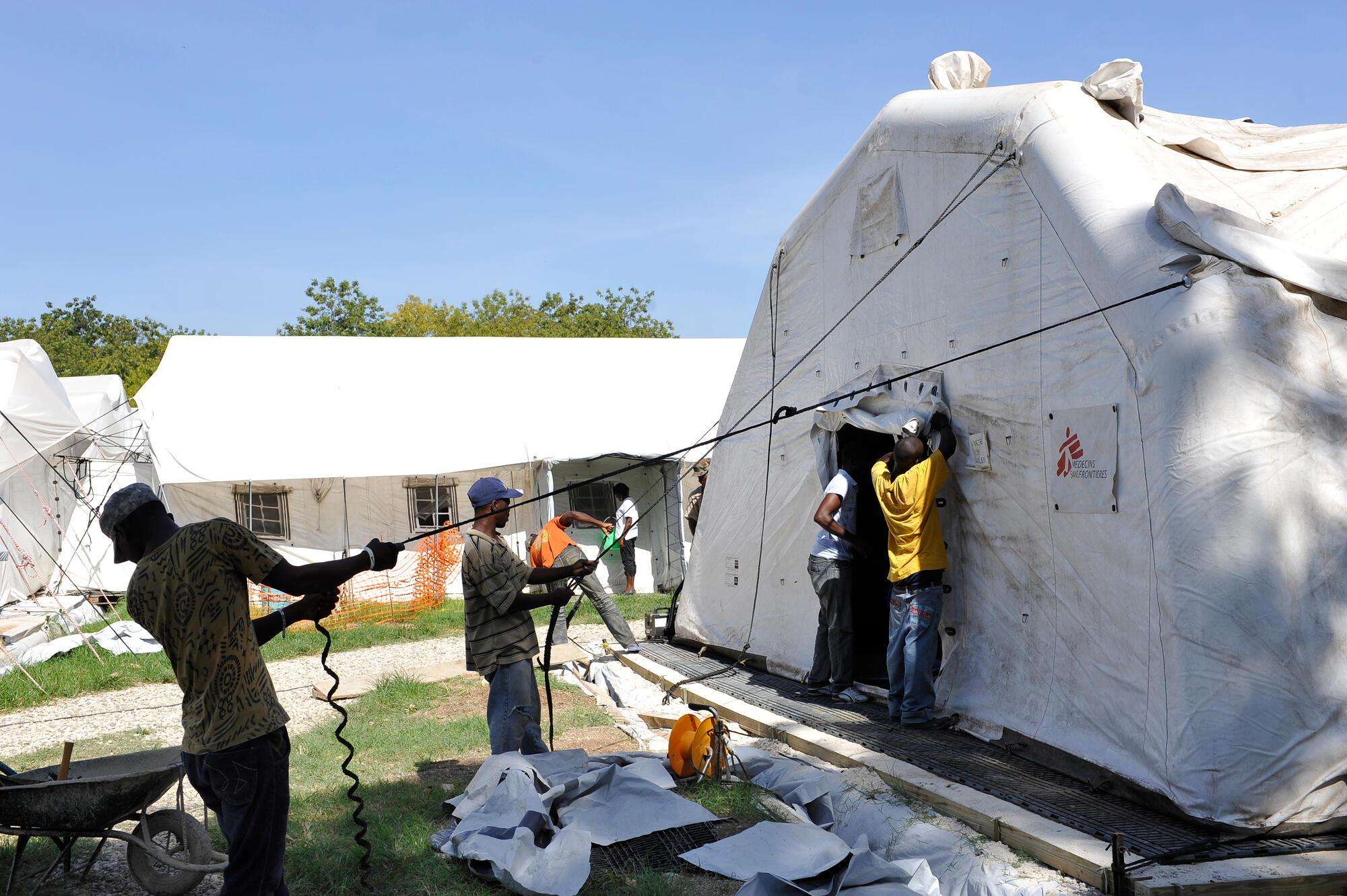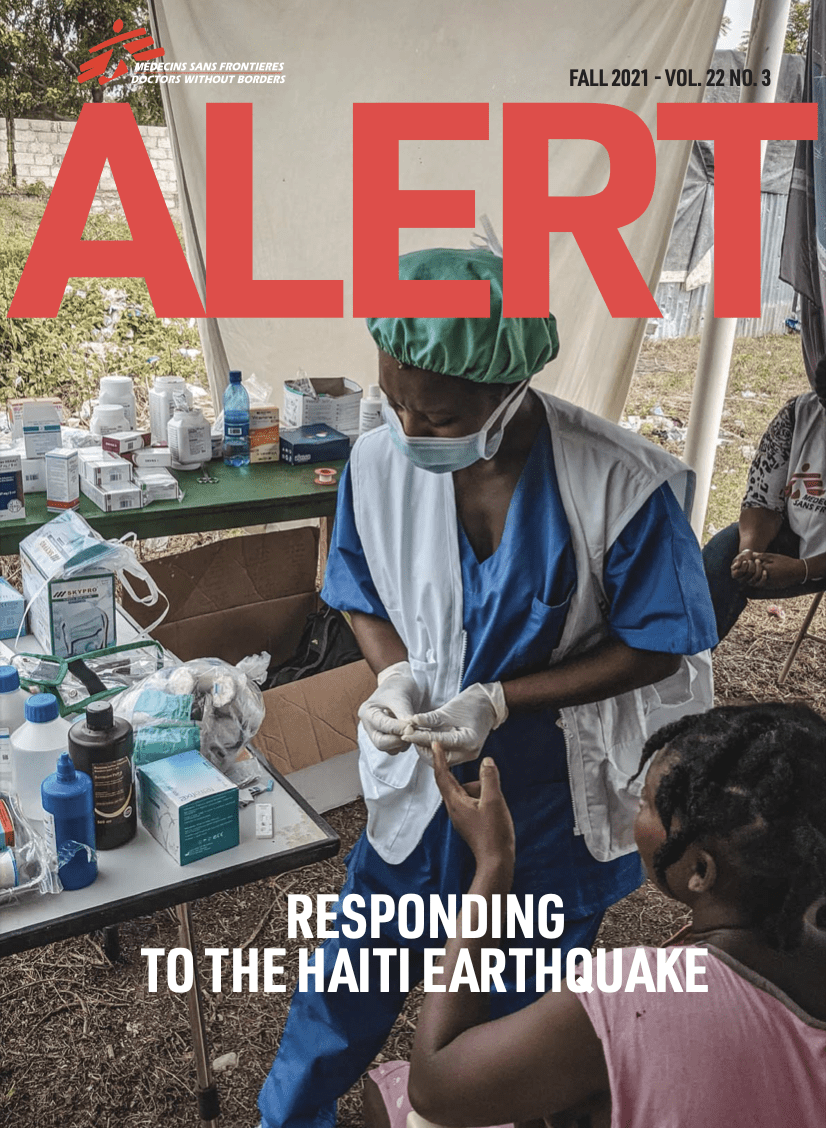Three decades of medical humanitarian work in Haiti prepared Doctors Without Borders/Médecins Sans Frontières (MSF) to respond quickly and effectively to the August earthquake.
1991
Two MSF nurses arrive in Haiti at the invitation of a local organization. They provide supplies and training to nurse anesthetists at hospitals in Fort Liberté and Cap-Haïtien and establish an ongoing MSF presence in the country.
1996
MSF shifts its focus to impoverished neighborhoods of the capital, Port- au-Prince, supporting local clinics, building latrines, and improving water supplies.
2004
In October, MSF responds to Hurricane Jeanne, providing medical care in affected areas. In December, we open a trauma center in St. Joseph hospital in response to increased medical needs due to violence and political tensions.
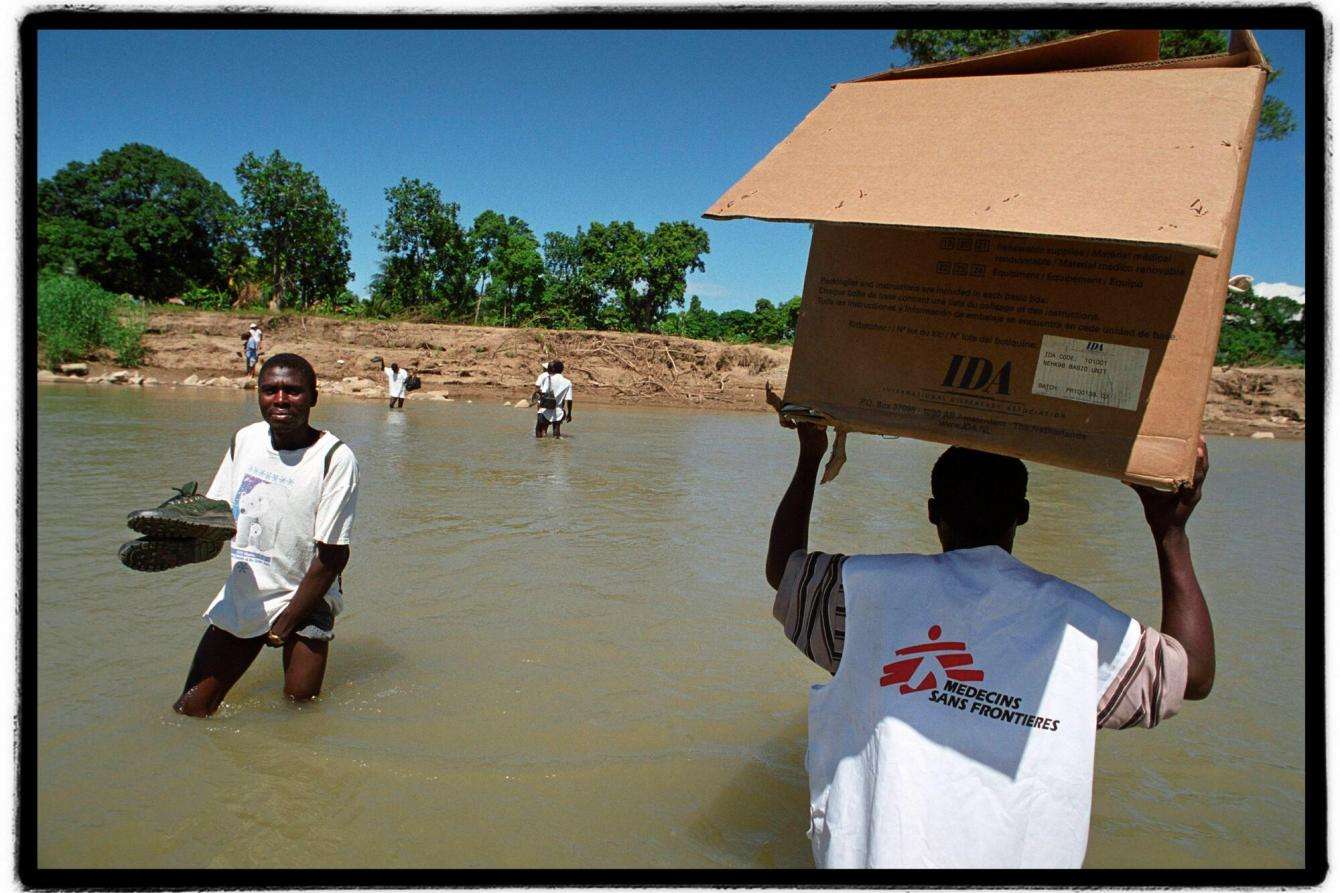
2006
MSF opens its emergency center in the Martissant neighborhood of Port-au-Prince.
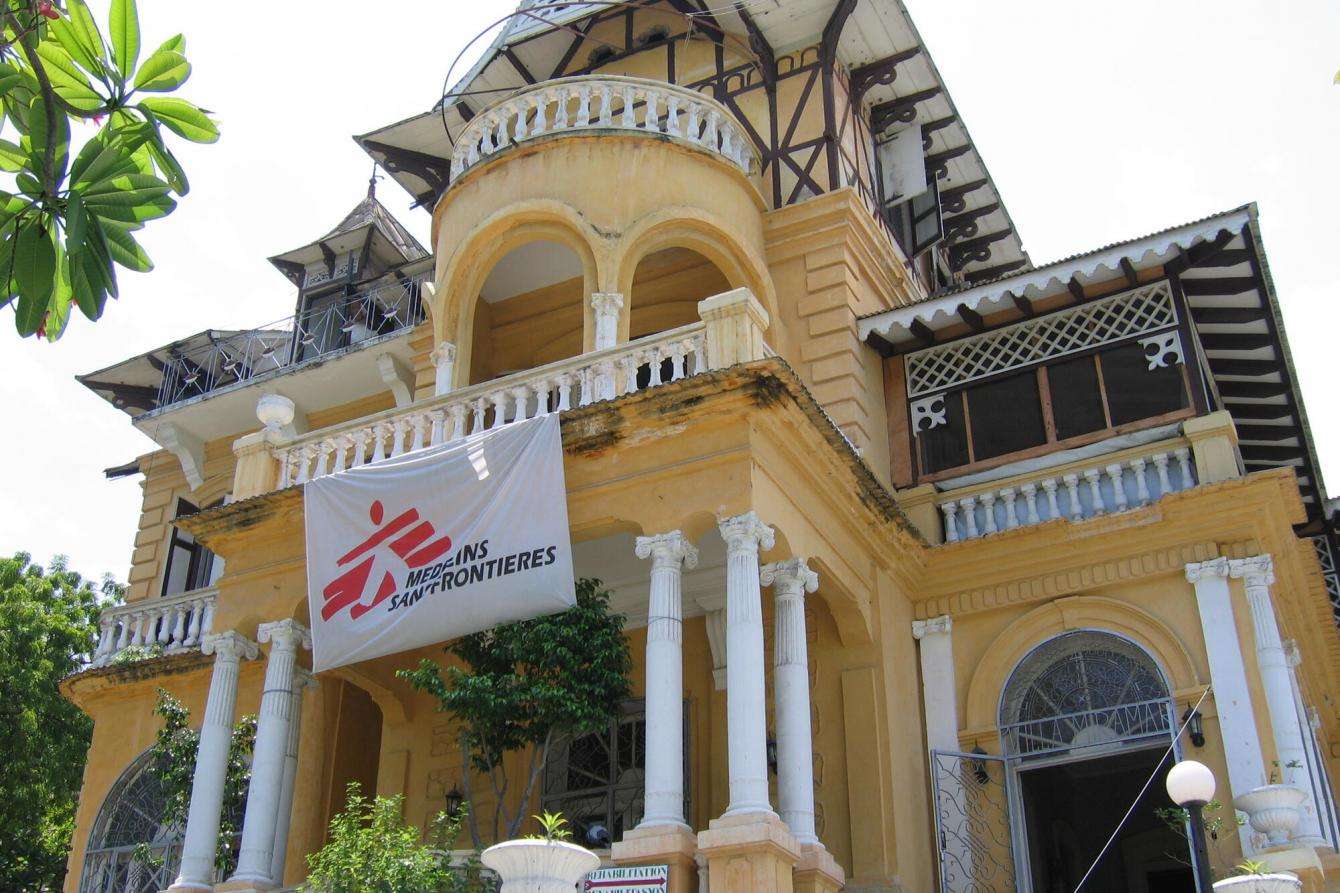
2010
A magnitude 7.0 earthquake strikes Haiti, including its densely populated capital region. MSF’s Trinité Hospital is destroyed. In response, we launch the largest emergency response in our history, treating patients across the devastated areas. In Port-au-Prince, MSF installs an innovative inflatable hospital to provide surgical care in place of Trinité hospital.
2010-2016
When a cholera epidemic strikes Haiti, MSF treats more than 300,000 people for the waterborne disease in multiple locations.
2011
In Port- au-Prince, MSF opens its emergency obstetrical hospital in the Delmas 33 neighborhood and its Drouillard hospital in the Cité Soleil neighborhood, which becomes Haiti’s main referral hospital for burn care.
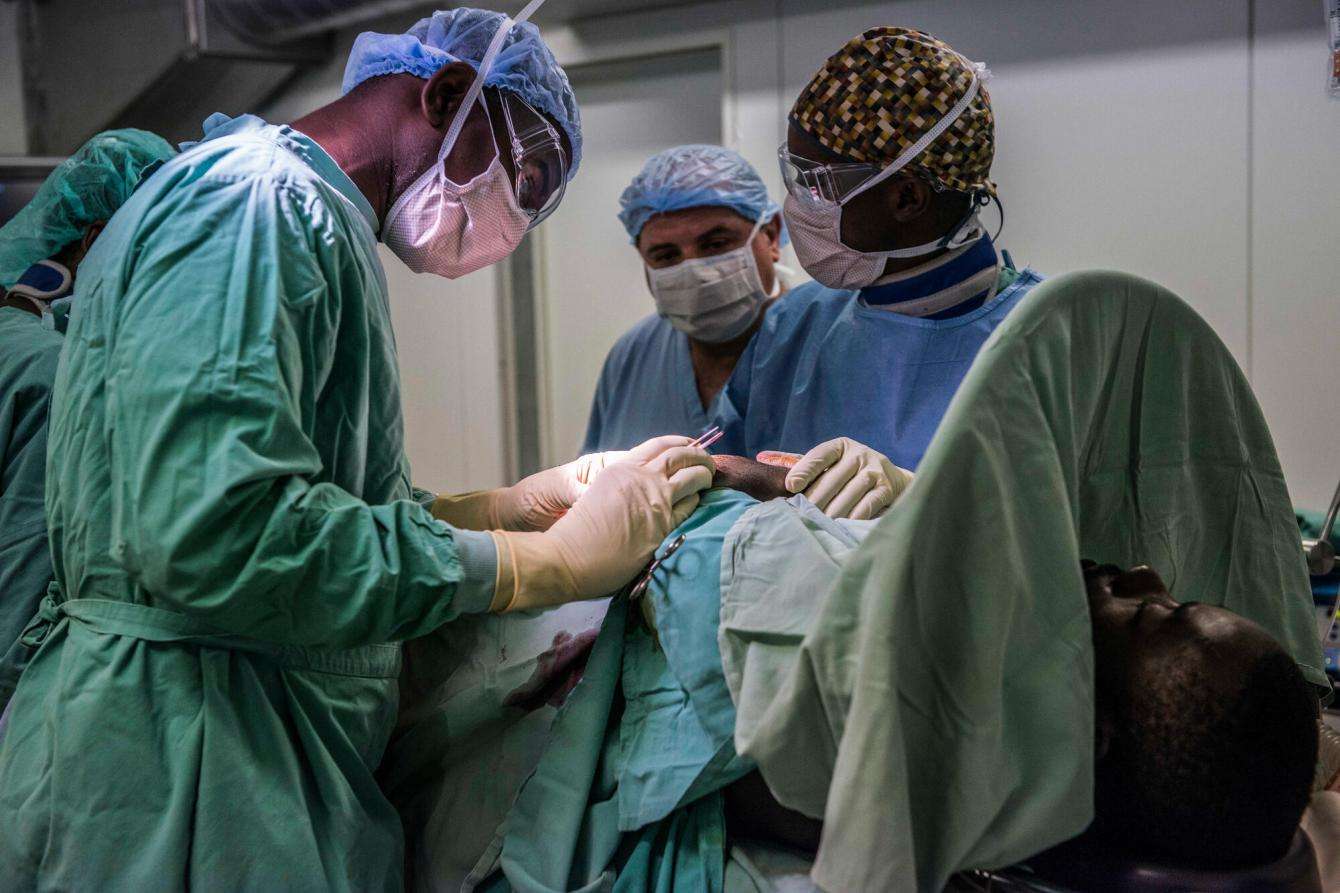
2012
MSF opens its Tabarre hospital in Port-au-Prince to provide specialized surgical care for trauma patients.

2015
MSF opens a clinic in Delmas 33 for survivors of sexual and gender-based violence.
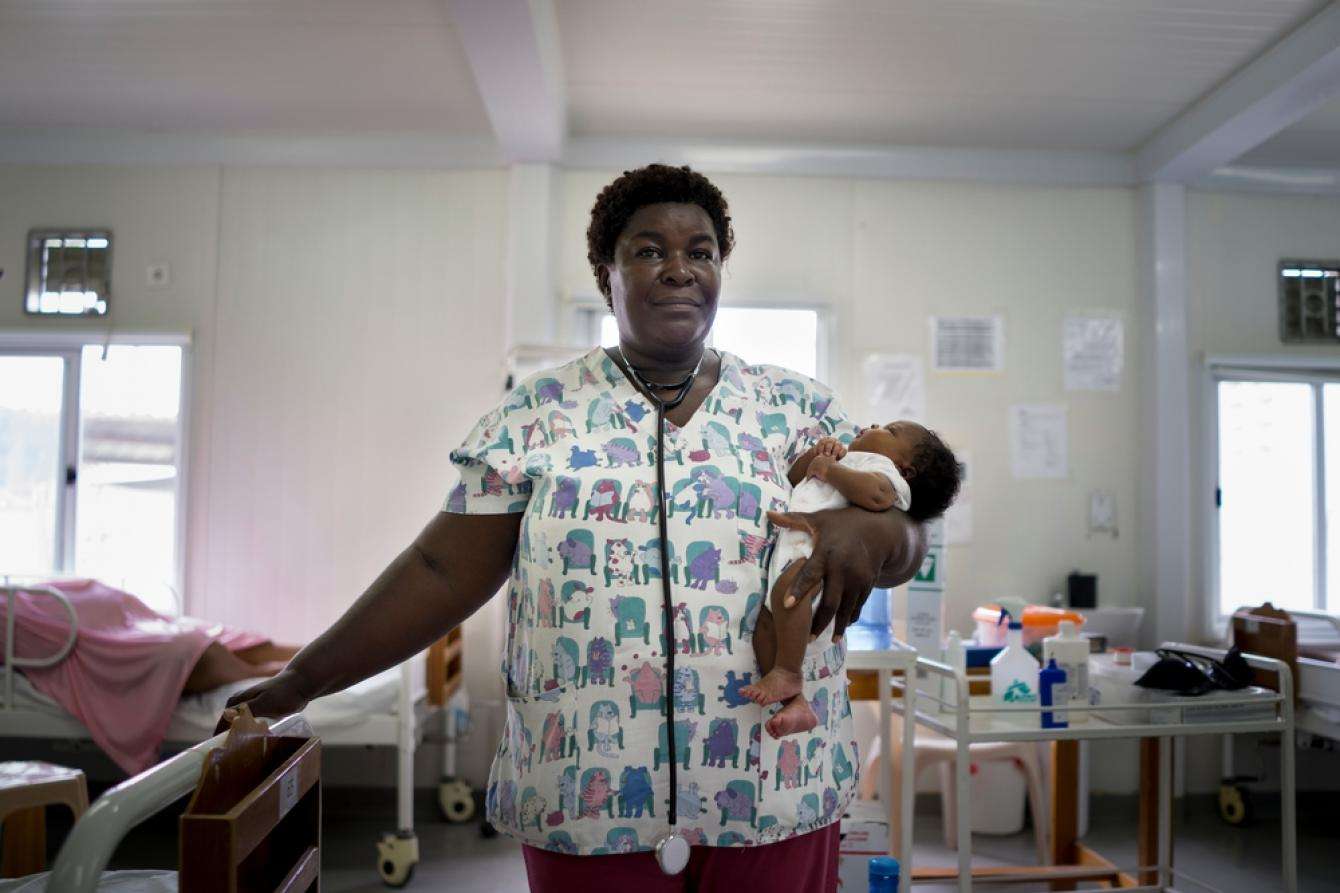
2016
MSF responds to Hurricane Matthew, which struck southern Haiti, supporting the Port-à-Piment hospital, running mobile clinics, administering vaccines, providing clean water, and donating building materials. An MSF team subsequently remains in Port-à-Piment, providing sexual and reproductive health care.
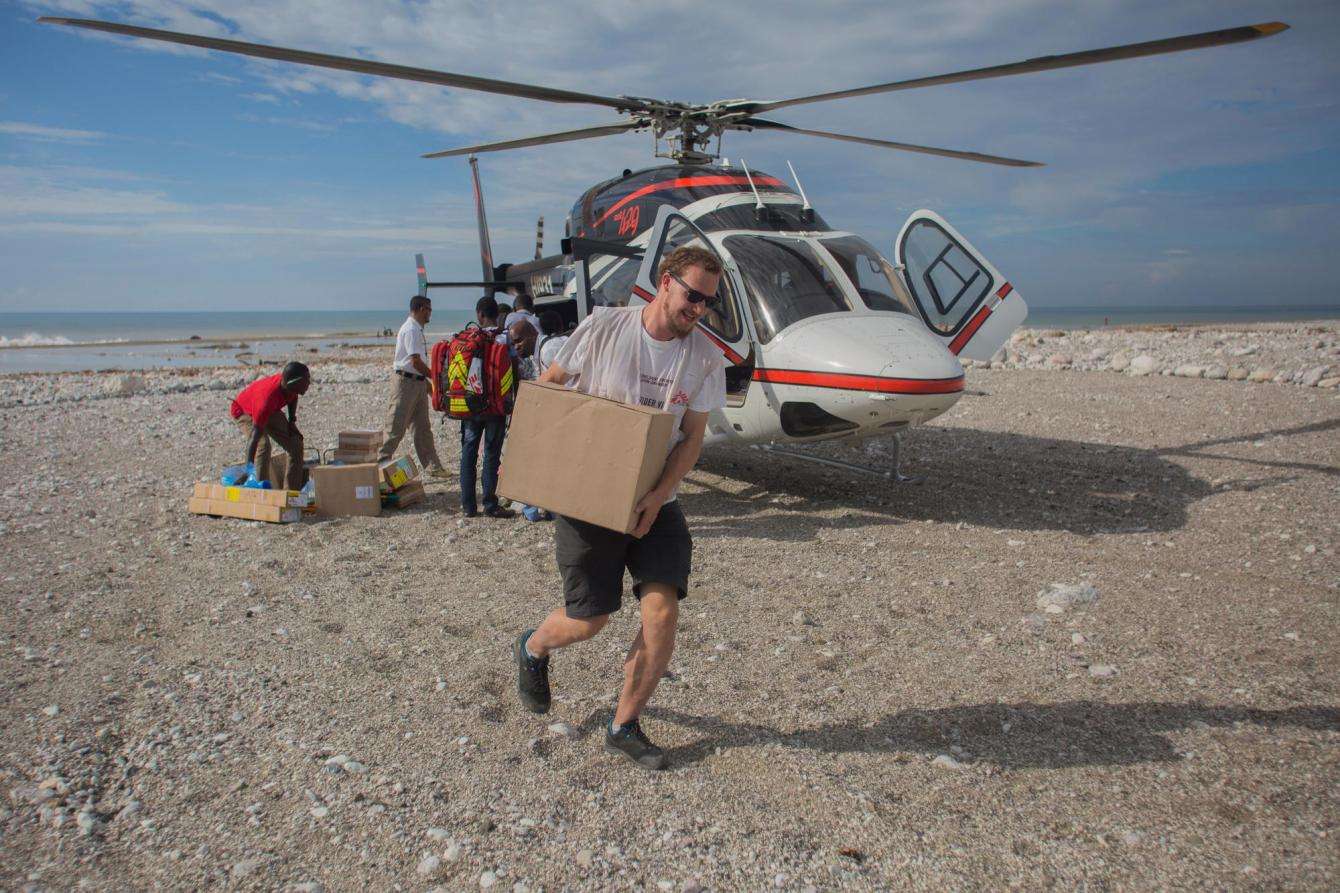
2018
MSF closes its obstetrical hospital in Port-au-Prince after providing care to nearly 120,000 women and girls.

2019
MSF closes its Tabarre hospital, but later reopens it as the need for trauma care increases due to heightened tensions and violence.

2020
As the coronavirus pandemic hits Haiti, MSF converts its Drouillard burns hospital into a COVID-19 treatment center before returning it to its original purpose after the first wave passes.
2021
Amid increasing insecurity in Port-au-Prince, MSF relocates its burn care program from Drouillard into its Tabarre hospital and temporarily moves its emergency center from Martissant to the Turgeau neighborhood. On August 14, a magnitude 7.2 earthquake strikes the south of the country. MSF stabilizes survivors and provides surgery in Port-au-Prince, Jérémie, and Les Cayes, runs mobile clinics in affected areas, and distributes supplies to displaced people and medical facilities.
